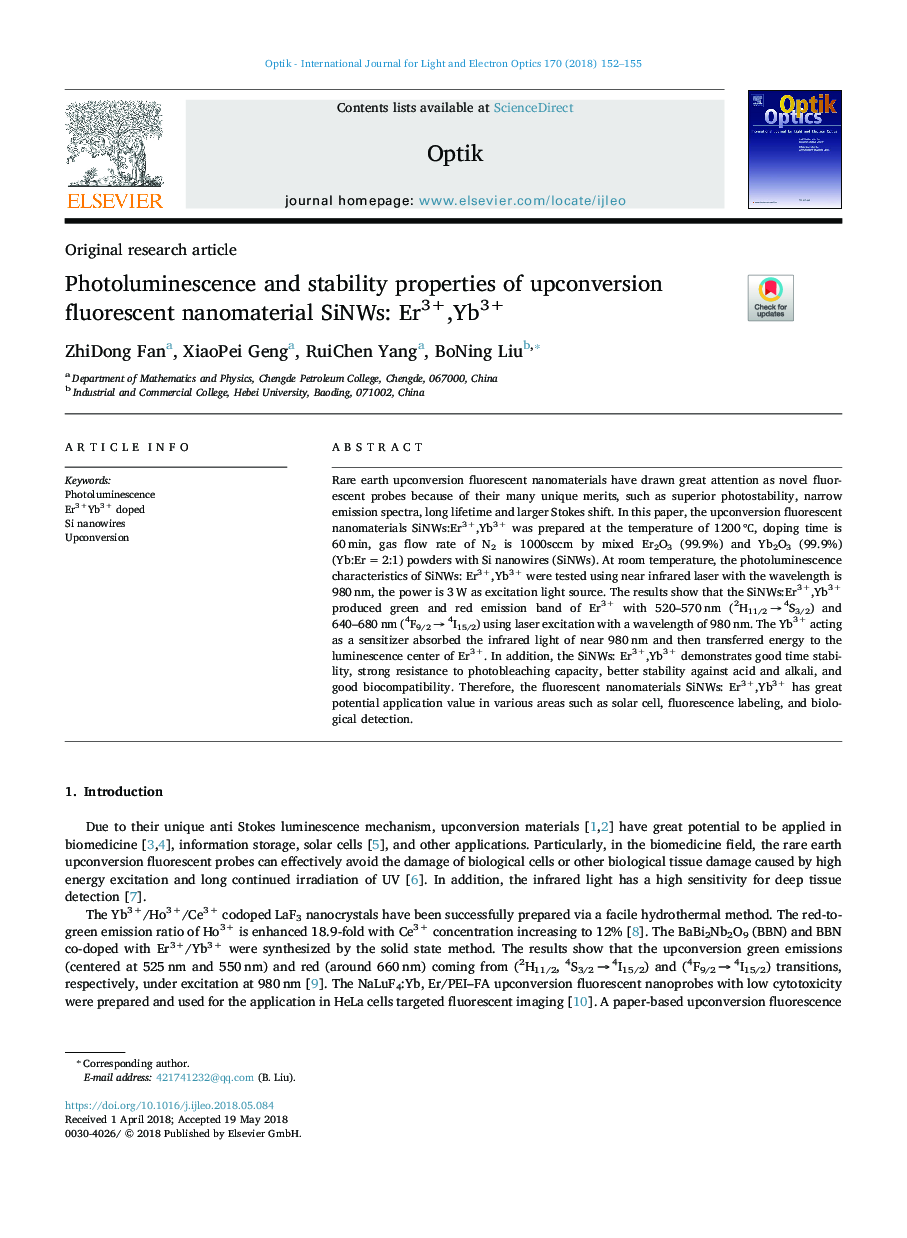| Article ID | Journal | Published Year | Pages | File Type |
|---|---|---|---|---|
| 7223244 | Optik - International Journal for Light and Electron Optics | 2018 | 4 Pages |
Abstract
Rare earth upconversion fluorescent nanomaterials have drawn great attention as novel fluorescent probes because of their many unique merits, such as superior photostability, narrow emission spectra, long lifetime and larger Stokes shift. In this paper, the upconversion fluorescent nanomaterials SiNWs:Er3+,Yb3+ was prepared at the temperature of 1200â¯â, doping time is 60â¯min, gas flow rate of N2 is 1000sccm by mixed Er2O3 (99.9%) and Yb2O3 (99.9%) (Yb:Erâ¯=â¯2:1) powders with Si nanowires (SiNWs). At room temperature, the photoluminescence characteristics of SiNWs: Er3+,Yb3+ were tested using near infrared laser with the wavelength is 980â¯nm, the power is 3â¯W as excitation light source. The results show that the SiNWs:Er3+,Yb3+ produced green and red emission band of Er3+ with 520-570â¯nm (2H11/2â¯ââ¯4S3/2) and 640-680â¯nm (4F9/2â¯ââ¯4I15/2) using laser excitation with a wavelength of 980â¯nm. The Yb3+ acting as a sensitizer absorbed the infrared light of near 980â¯nm and then transferred energy to the luminescence center of Er3+. In addition, the SiNWs: Er3+,Yb3+ demonstrates good time stability, strong resistance to photobleaching capacity, better stability against acid and alkali, and good biocompatibility. Therefore, the fluorescent nanomaterials SiNWs: Er3+,Yb3+ has great potential application value in various areas such as solar cell, fluorescence labeling, and biological detection.
Related Topics
Physical Sciences and Engineering
Engineering
Engineering (General)
Authors
ZhiDong Fan, XiaoPei Geng, RuiChen Yang, BoNing Liu,
